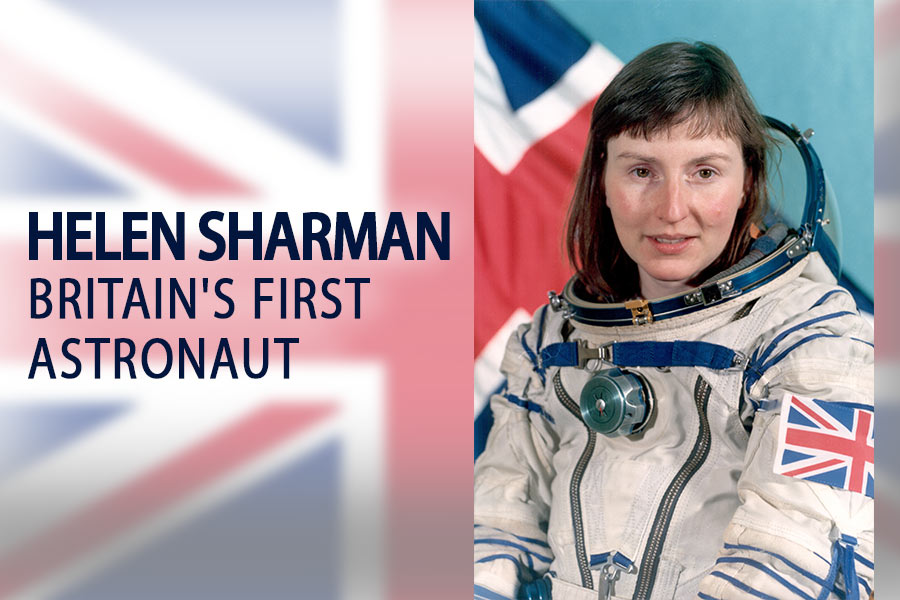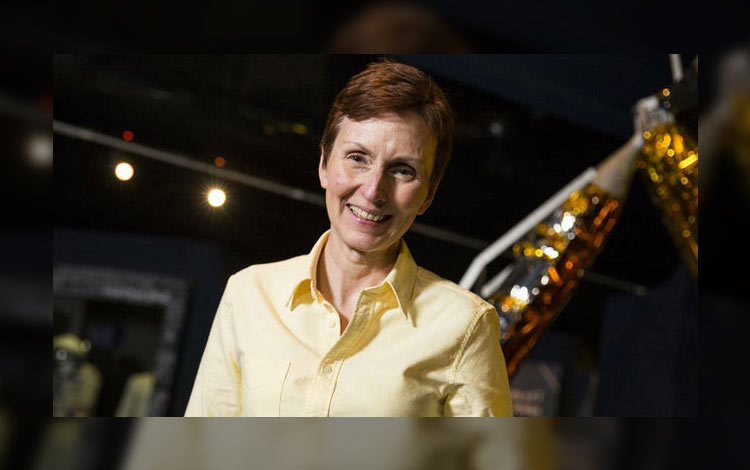People in Space: Helen Sharman – the First British Person in Space
20th Dec 2021
«Astronaut wanted. No experience necessary»
It was this announcement, played on radio in 1989, that 25-year-old Helen Sharman from Sheffield responded to, becoming the first British astronaut in space shortly after. The ad was about participation in the joint Soviet-British scientific project Juno, which implied an eight-day stay at the Mir orbital station. The USSR has already taken a Mongol, an Afghan, a Cuban, a Syrian, and a Japanese citizen into space; now, it was time for the first Brit in space. The UK government was not involved in space exploration at the time, so paying for a seat was the only way to get the first British person in space.
Sharman was one of 13,000 applicants to join the mission with hopes of becoming the first British woman in space. According to Helen, she was attracted not so much by space flight and a chance to become one of the British people in space, as by training, the opportunity to live in Russia, learn a language, and engage in advanced mechanics. At 25, she already held a PhD in chemistry and had worked for companies such as General Electric and confectionery company Mars. It was Sharman who invented ice cream flavoured with the popular chocolate bar. Later, the British press dubbed her the girl from Mars.
Chemist experience, strong psychological and physical health, excellent technical and linguistic skills helped Helen become one of the four selected applicants for an internship at the Yuri Gagarin Cosmonaut Training Center in Zvyozdny gorodok, a settlement in Russia. She quickly mastered the Russian language and honorably withstood all 18 months of backbreaking training thanks to her calm and tranquil personality.
In 1991, due to a lack of private funding from the British side (the UK Space Agency did not oversee Juno), the mission was jeopardized, but eventually went through thanks to Soviet money. However, some of the experiments behind the first British man in space had to be cancelled.
8 days in Space
Sharman went into space on May 18, 1991, aboard the Soyuz TM 12 spacecraft, along with two Soviet cosmonauts, Anatoly Artsebarsky and Sergei Krikalev. The first British woman in space carried the Queen’s photo, a butterfly brooch given to her by her father, and a “space passport” in case her capsule landed outside the Soviet Union.
Soyuz TM-12 successfully launched from the Baikonur spaceport in Kazakhstan and docked with the Mir space station the next day.
Sharman spent 7 days, 21 hours, and 13 minutes in space. As the first Brit in space, she was mainly engaged in biological and agricultural research, Earth Observation (took photographs of the British Isles) and maintained an amateur radio connection with British schoolchildren, interested in what one of the first British people in space had to share.
The first British woman in space returned to Earth together with a Soviet cosmonaut Musa Manarov, who set the record for staying at the Mir station — 541 days. After landing, she stepped out of the capsule and said, “The air is very fresh. Smell the flowers, they are wonderful.”
Thanks to her participation in the Juno mission, Sherman holds three record titles:
- first British cosmonaut;
- first British person in space;
- first European woman in space.
For her achievements in 1992, she was awarded the Commander of the Order of the British Empire and received a star on the Sheffield Walk of Fame.
Sharman’s groundbreaking success paved the way for the first British man in space. Future astronauts, Michael Foale and Tim Peake, would soon become the first British people in space from the European Space Agency.
The first British astronaut in space: Aftermath

Helen never returned to space. Many astronauts who have been in orbit suffered from everyday life on Earth. Neil Armstrong became a hermit, Buzz Aldrin started to drink. According to Helen, she never felt devastated after her journey, although she wanted it to last longer. Back home, the first British woman in space published two books, Seize the Moment and The Space Place (a children’s book making sense of science), and spent most of the 90s travelling the country and talking about her experiences on radio and TV.
Then, the first Brit in space got tired of publicity and disappeared for almost 15 years. “I wanted my privacy back,” she said. “I’m a scientist, but I found myself in interviews being asked where I bought my clothes. Irrelevant. And I always felt I had to be photo-ready. Fame was the downside of space.”
In 2011, Sharman returned to academia. She worked as a project manager at the National Physics Laboratory, then as Operations Manager at the Faculty of Chemistry at Imperial College London. Today, Helen is the President of the Institute of Science and Technology. She supports increased funding for space activities in the UK and still dreams of returning to space.
“Today, I would not hesitate to do it again. It’s a wonderful thing,” says Helen Sharman, the first British astronaut in space.






Thank you for your comment! It will be visible on the site after moderation.